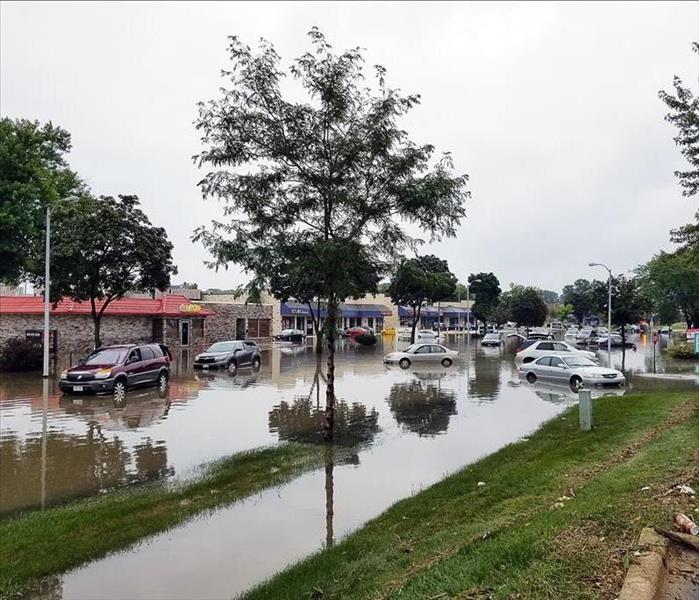Prepare for Flash Floods: Your Guide to Stay Safe and Clean Up Effectively
3/10/2020 (Permalink)
Flash floods can be devastating and dangerous, and oftentimes there is no warning.
As a leader in cleanup and restoration services in the Eatontown / Long Branch area, our team here at SERVPRO has seen how damaging a flash flood can be. We want to help make sure everyone in this community will be prepared.
Causes of Flash Floods
Flash floods typically happen when there’s a sudden storm, and the ground soil can’t absorb all the water that’s quickly streaming in.
The most common causes of flash flooding include:
- Rain for an extended time (e.g. during a tropical storm or hurricane)
- Sudden heavy rain in a short time span
- Dam failures
- Rapid thawing of snow build-up
- Overflow in man-made sewers and storm drains
Flash Flood Safety
It’s important to understand the difference between a flood warning and a flood watch:
- Flood Warning – a flood is expected within 30 minutes to an hour
- Flood Watch – the conditions are right for a flood, and you should continually check to see if a Flood Warning develops
If a flood warning is issued, you probably won’t have much time to take action, so it’s important to be prepared and know what to do:
- Pay attention to instructions from local authorities – there may be a mandatory evacuation or a recommended evacuation to designated shelters or areas.
- Protect your home – if there is no need to evacuate, be sure to secure your home by closing all windows and doors and staying up high away from possible flooding.
- Pay attention to water sources – if you find yourself near any bodies of water, from oceans to rivers to lakes to streams, keep a close eye on water levels and be prepared to leave if necessary. Storm drains or drainage ditches could also cause problems.
- Avoid driving and walking through flooded areas – many flood-related deaths are the result of people who are trapped in the cars or swept away by the flood waters.
Flash Flood Cleanup
To cleanup after a flash flood, you want to make sure to remove all the water and dry the affected area as quickly as possible. Whether you hire professional cleanup and restoration services or can manage the cleanup work yourself, the process typically involves the following steps:
- Removing all standing water
- Properly disposing damaged materials
- Quick-as-possible drying and dehumidifying
- Cleaning and disinfecting
- Rebuilding and restoring
After a flash flood, it’s important to dry the affected area as soon as possible in order to minimize the extent of the water damage. This is why many people turn to experts like SERVPRO of Eatontown / Long Branch, as we guarantee fast, thorough cleanups with our expertly trained technicians and advanced professional-grade equipment. We’ll even help you work with your insurance.





 24/7 Emergency Service
24/7 Emergency Service
